Ever noticed your beloved maple wood furniture changing shades? How and why does this happen? Let’s uncover the mystery of maple wood darkening over time!
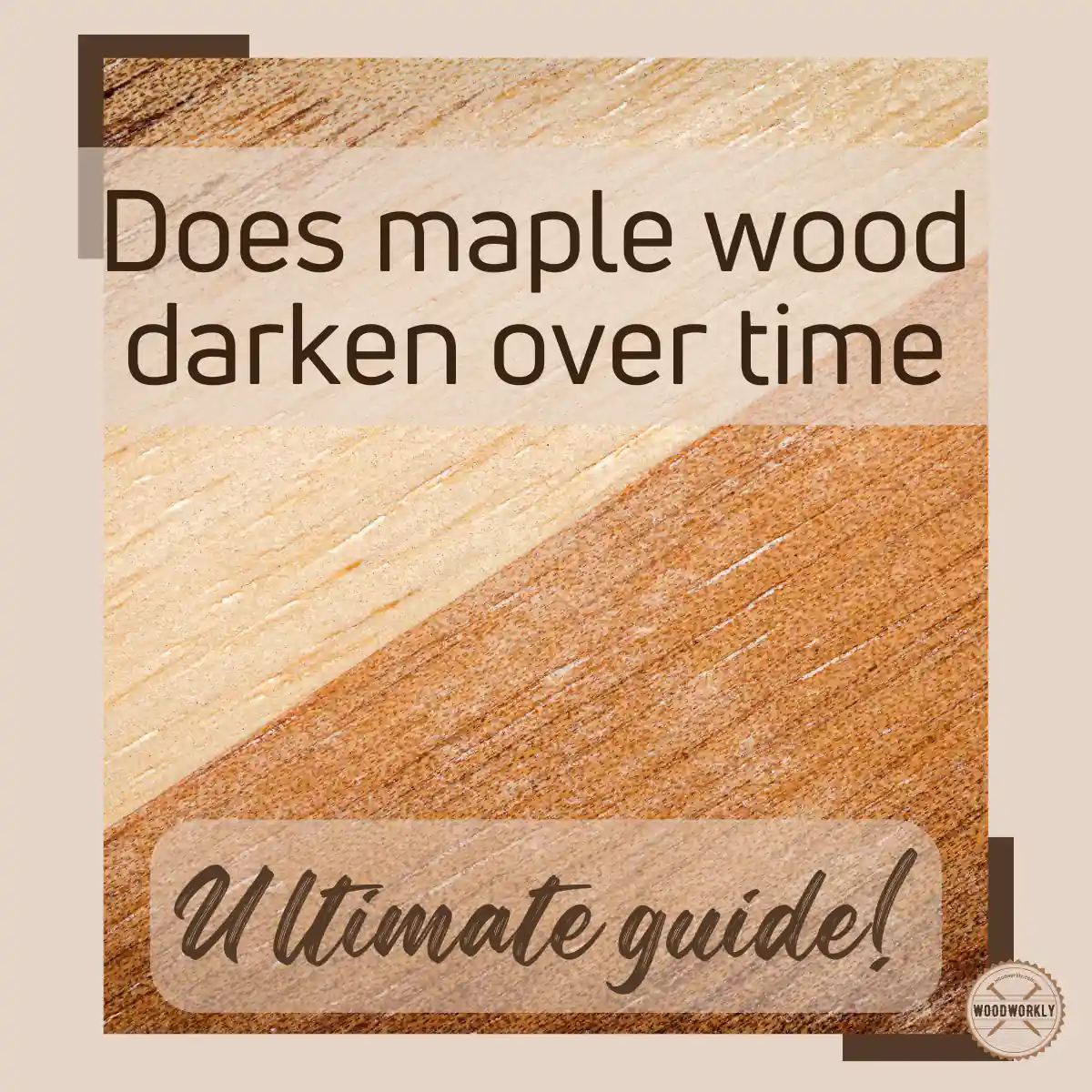
Maple wood is useful in making cabinetry, flooring, kitchen accessories, and many other high-end furniture pieces.
Its white tone with reddish-brown hues adds a more aesthetic look to the furniture.
But will the color last? Many people wonder what aged maple wood will look like.
So, I did some research, and here’s what I’ve found: Does maple wood darken over time?
Yes, maple wood naturally darkens over time due to a process called patination, influenced by exposure to light and oxygen. However, this doesn’t affect the wood’s quality and can be slowed with UV-protective finishes and avoiding direct sunlight.
But there’s a lot more we need to learn about the maple wood color change.

So, in this article, I’ll dig into How maple wood darken over time? how to prevent the wood from darkening and protect our furniture with proper care.
Just keep reading!
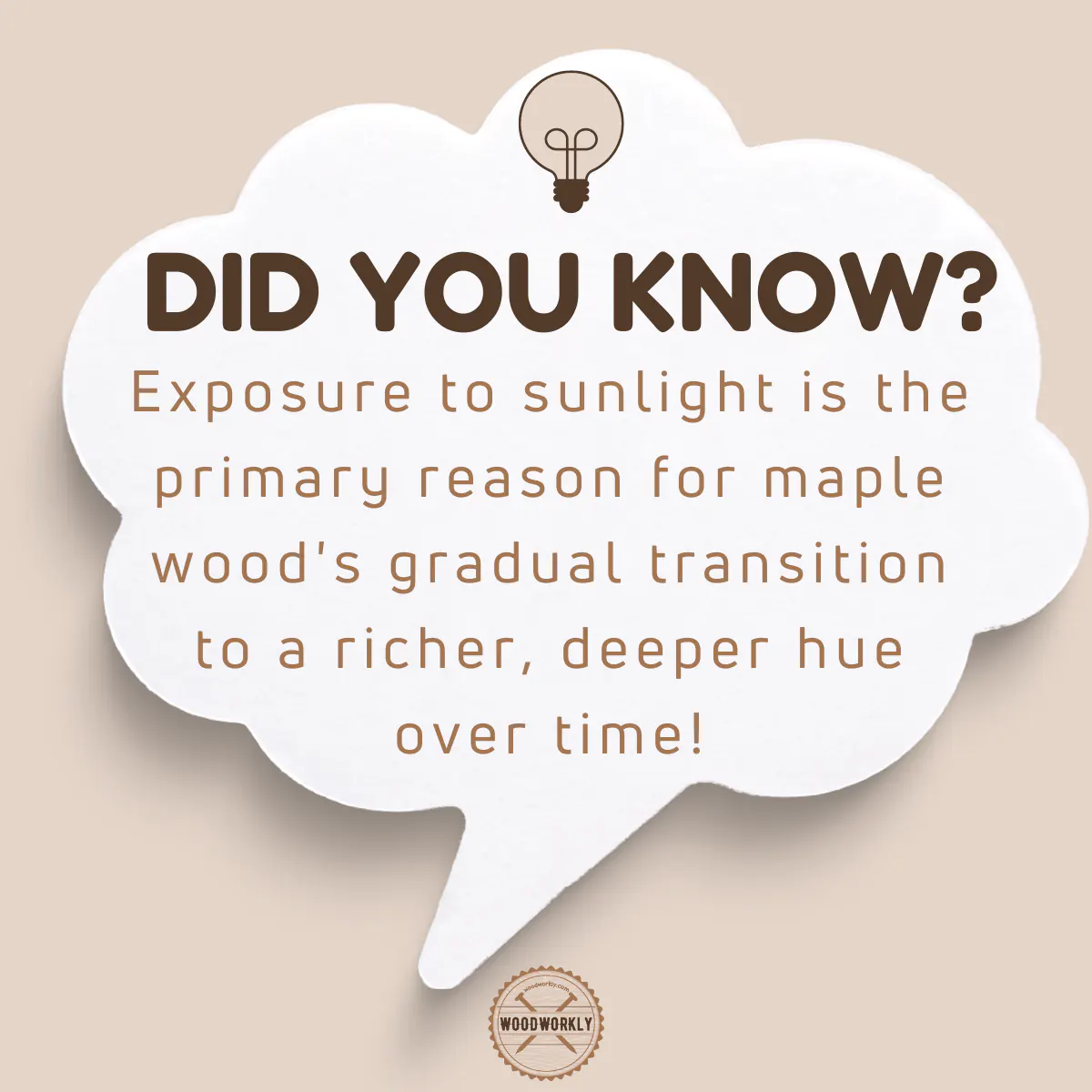
Why Does Maple Wood Darken Over Time?
Maple wood turns dark due to several reasons.
Here’re the common reasons that cause the darkening of maple wood over time,
- Exposure to UV rays in sunlight
- Exposure to Oxygen in the air
- Exposure to heat
- Due to moisture
Among the above three, exposure to air and sunlight are the main reasons for the darkening of maple wood.
The rate of darkening depends on the quality of the maple you have. Mostly, during the first couple of years, the darkening process will naturally occur, and you won’t notice.
But eventually, the light and bright white color will be gone and the whole wood will turn into deep golden honey color.
This happens because of the UV rays that are naturally included in sunlight.
If your maple wood furniture is kept outside the darkening will happen fast than indoor furniture due to continuous exposure to direct sunlight.
Maple wood is highly sensitive and easily reacts with sunlight that results in color change. The reason for this is because polymerization of polyphenols of maple wood with UV rays in sunlight.
This polymerization process leads wood color from light to dark over time.
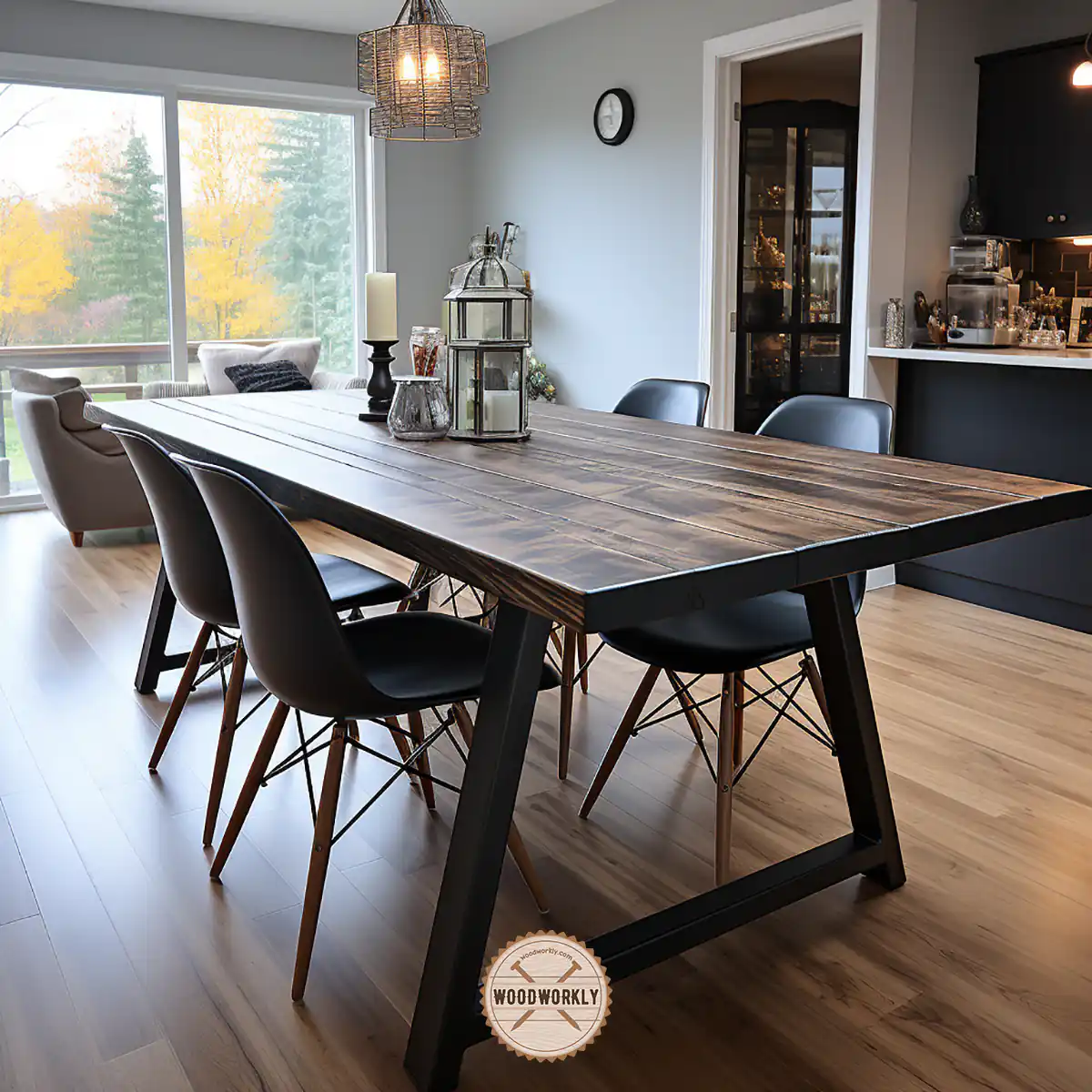
Another main reason for the darkening of maple wood and its furniture is due to oxidation of the wood with oxygen in the air.
There are so many chemicals and oils inside the maple wood.
Those chemicals continuously react with atmospheric oxygen in the air. This will cause the darkening of the maple wood over time.
Moisture will also do the same as oxygen in the air. They can go through the porous structures of the wood and make the reactions happen. Those results darken the maple wood.
Ultimately darkening over time happen not only for maple wood but also for other popular woods like cherry, oak, and other hardwoods as well.
Even though most woods are darkened over time, Walnut wood lightens over time.
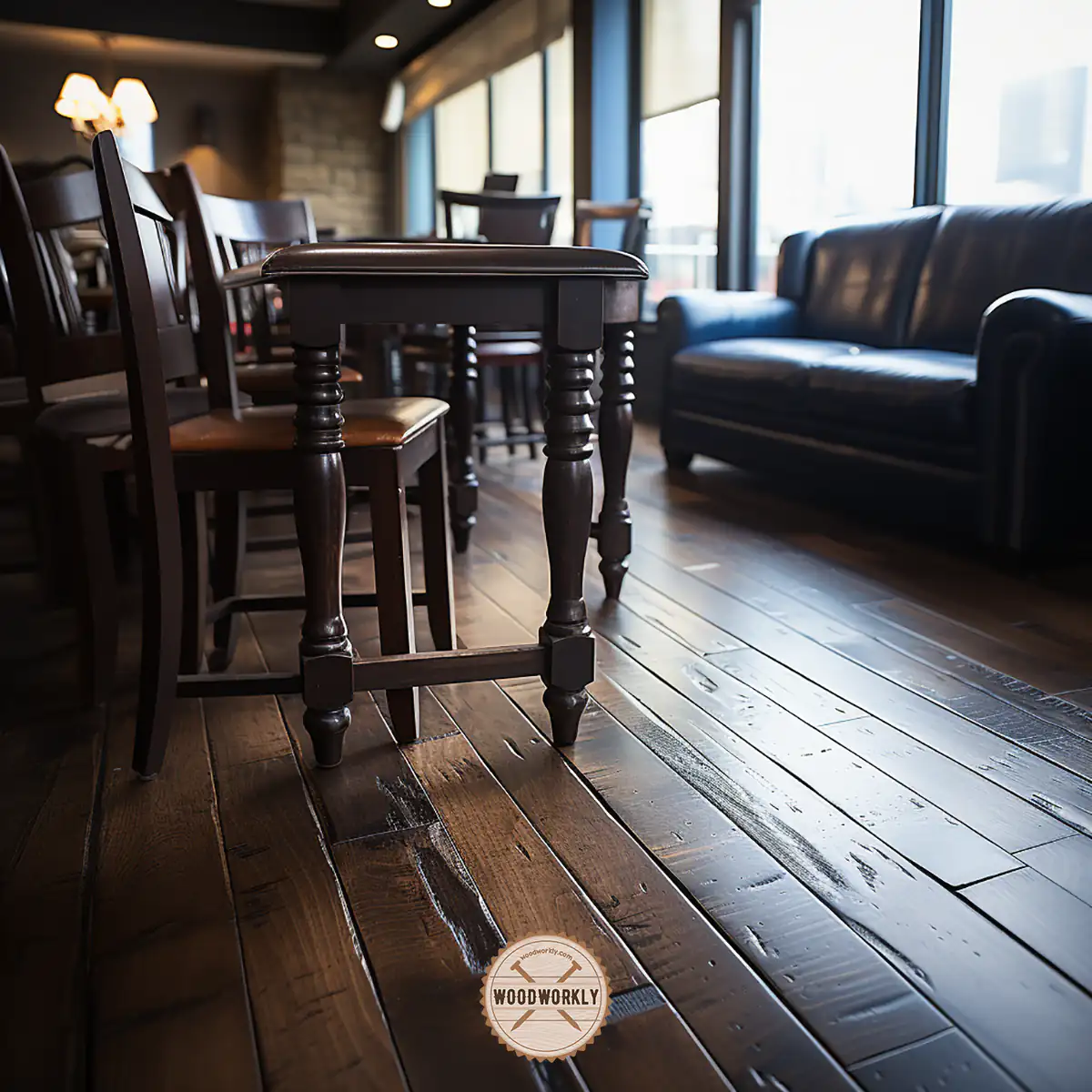
What Does Aged Maple Wood Look Like?
Over time, aged maple wood develops a richer, deeper hue while still retaining its characteristic grain pattern.
Aged maple wood isn’t necessarily dark, but it takes on a warm amber patina that adds character and sophistication to its appearance.
The change in color results from the oxidation process that wood undergoes when exposed to air, coupled with the impacts of ultraviolet (UV) light exposure and environmental conditions such as moisture levels.
As the lignin and cellulose compounds in the wood react with the oxygen and UV light, they form chromophores – light-absorbing molecules that give wood its color.
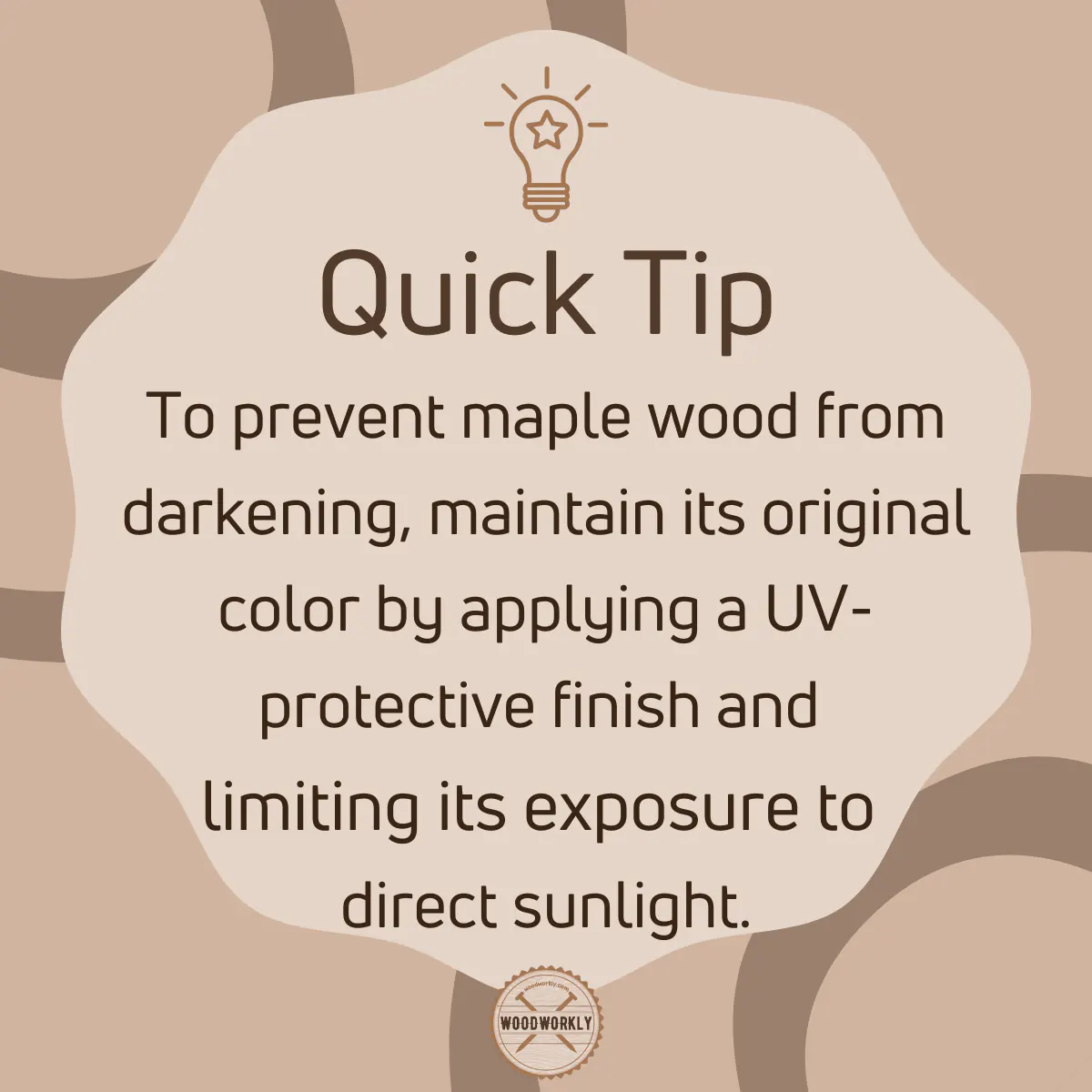
Aging Gracefully: A Closer Look at the Patina
A hallmark of aged maple wood is the patina it develops. A patina is the sheen on a surface produced by age and use.
It’s a kind of natural magic that woodworkers and enthusiasts celebrate.
The patina on maple wood highlights its unique grain patterns and texture, making each piece one-of-a-kind.
This aging process doesn’t occur overnight, but rather over years of exposure to natural light and air.
And while the change can be subtle, it adds depth and richness to the wood that’s not seen in its youthful days.
How Does Maple Furniture Change Over Time?
The darkening of maple wood is a completely natural process and it’s hard to avoid.
So, if the maple raw wood darkens over time, the same goes with furniture made of maple wood. They also will darken over the years.
The color change of maple wood furniture from bright and light white with reddish-brown hues will dramatically change to deep golden honey color.
This can easily detect if your furniture has been kept outside for a long period. direct exposure to the UV rays of the sunlight over a long time will change the coloring chemicals of maple wood and cause deep golden honey color.
Also, the level of exposure will increase the speed of the color shift from light to dark.
When the surface of the furniture interacts with UV light and air, the darkening process is set in motion.
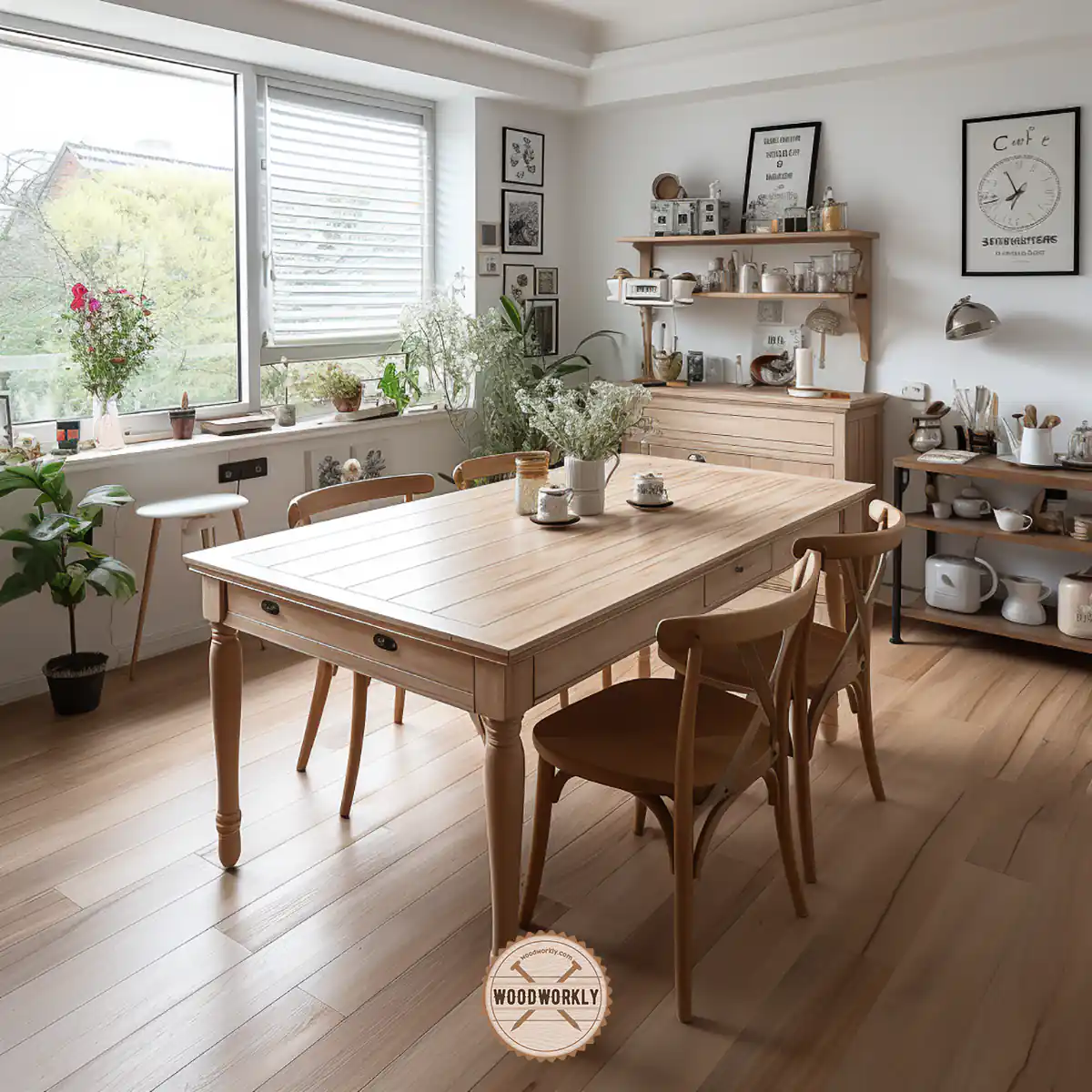
This darkening process can only stop if you live in a dark cave with an oxygen-free environment. So, that’s not possible.
Even though we cannot stop the natural darkening process, we can delay it by keeping our furniture away from touching direct sunlight.
I have experienced the darkening of maple wood furniture practically. I have left one of my old maple cabinets for outside more than 2 years without using it. These are the things that I have noticed recently,
The whole outside of the cabinet was already darkened to deep honey color all over.
But when I look at the inside of the cupboard and under the desk and inside drawers, they still have that bright light white color.
This is a clear example of how maple furniture changes its color from light white to dark deep honey color due to long-term exposure to the sunlight.
Color changes in maple wood furniture tend to be dramatic in the first few years.
If you’re willing to use maple wood for flooring, once they are installed, probably you have nothing to do to protect them from direct sunlight. Especially when the area is widely open.
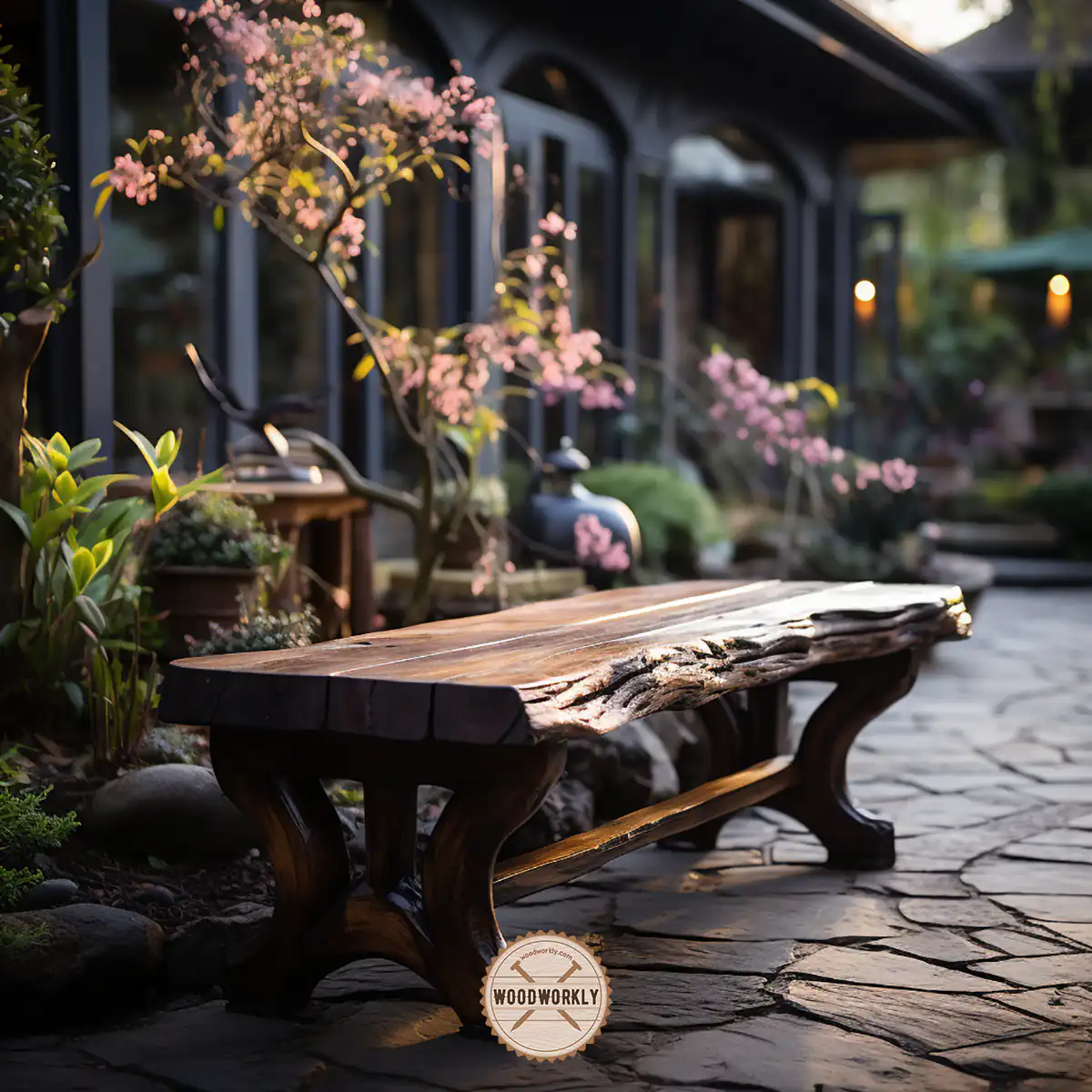
The best protection you can get is by doing better finishing and applying a quality coat over the whole surface before it is placed.
| Wood Type | Before exposing to Sunlight | After exposing to Sunlight |
|---|---|---|
| Maple | Light bright white with reddish-brown hues | Dark deep golden honey color |
| Cherry | Light straw color | Deep red color |
| Mahogany | Lighter tone | Deep rich tone |
As you can see, Furniture that is made of light-colored wood gets darker over time. Except for Walnut which lighten over time,
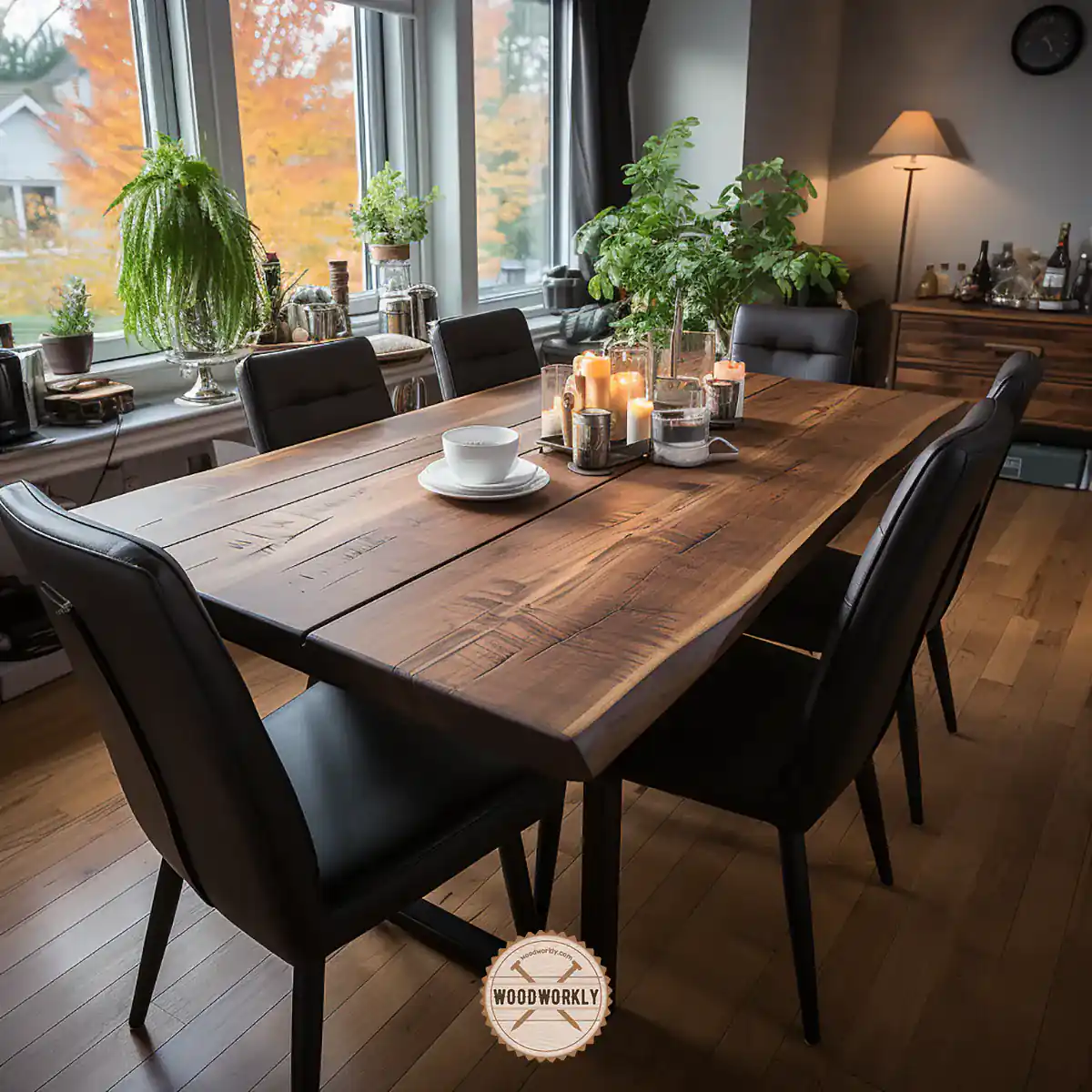
How to Keep Maple from Darkening?
Unfortunately, according to my years of experience with woodworking, there is no direct solution for the color change of maple over the years.
But there are some useful steps you can follow to reduce the color change significantly by minimizing exposure to direct sunlight.
You can avoid maple wood from darkening by following actions,
- Avoid placing maple furniture in humid areas
- Avoid placing maple furniture surfaces to direct sunlight
- Stop furniture from continuous heat and moisture touching
- Keep your maple woodwork away from fungus areas
Here I have listed down steps you can take to stop the darkening of maple, which are useful for any maple wood application.
1. Apply Finisher that Includes UV inhibitors
By stopping hitting UV rays on the surface of the maple wood, the darkening process can be prevented, and you’ll be able to keep its light color for a long time.
In order to stop hitting UV rays on the wood surface, we can apply a finisher that contains UV inhibitors as ingredients.
The best finishers that contain UV inhibitors available in the market are,
- Lacquer
- Linseed oil
Those finishers are equipped with anti-UV agents, which can stop UV rays from going through the finishing coat.
By applying one of the above two as a finisher for your next maple woodwork you’ll be able to keep the wood from darkening.
Once you apply the linseed oil to the maple wood surface, it will penetrate through the pores and small holes inside the wood.
This will not only help to protect the surface from direct sunlight but also give some sort of air proofing and waterproofing as well.
But the drying time is so high.
Among lacquer and linseed oil, I highly recommend using lacquer because it dries quickly and the application is easy compared to linseed oil.
If your maple wood furniture is for outdoor use, apply a minimum of 4 coats of lacquer, otherwise, 2 coats are well enough for interior furniture.
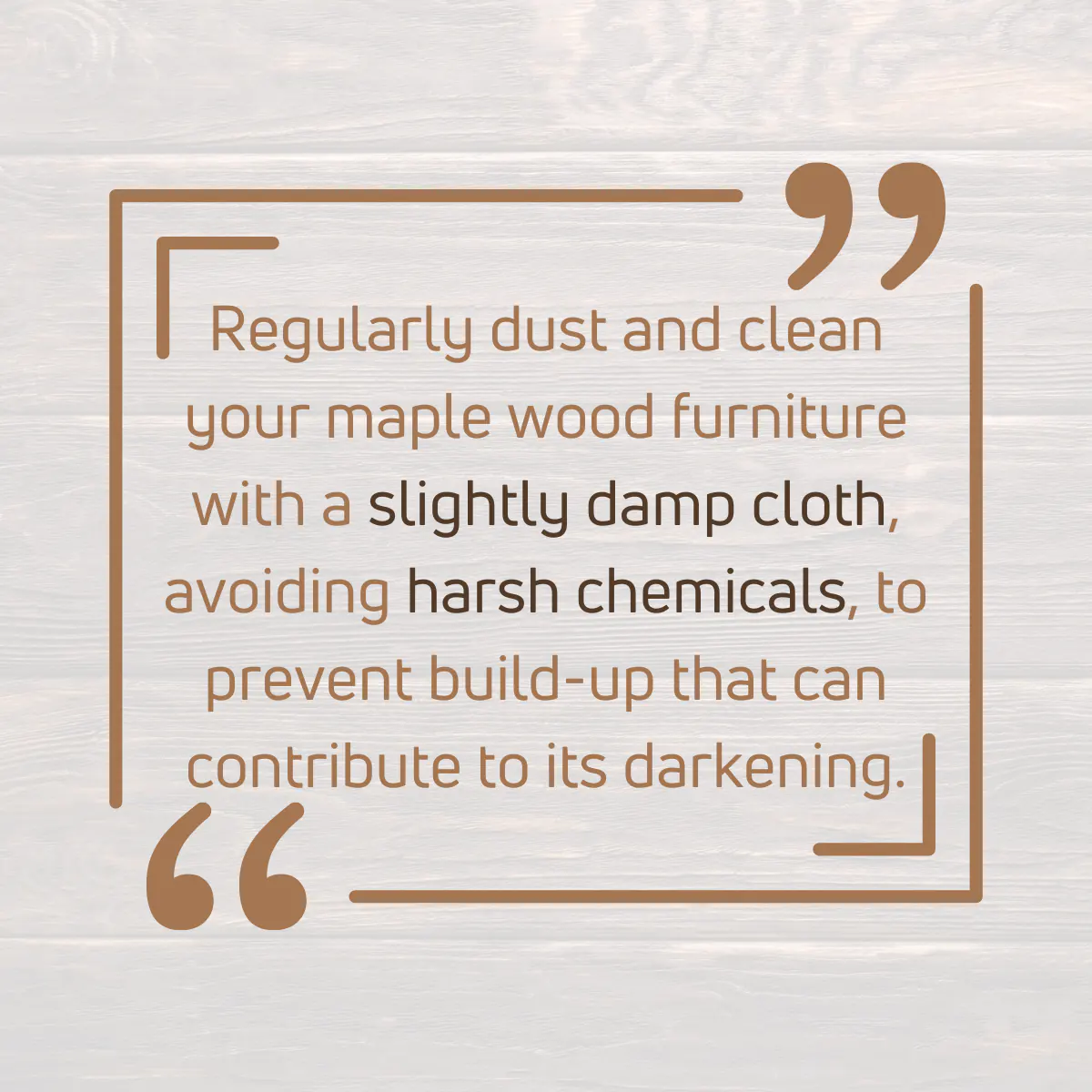
2. Move Furniture by Avoiding Shadowing
By preventing shadowing and rearranging maple wood furniture from time to time you’ll be able to stop them from darkening.
By doing this the amount of sunlight hitting a specific area of the wooden surface will change occasionally.
This will equalize the UV rays exposure and reduce the darkening of maple and also spread out the dark color by giving a consistent color all over the woodwork.
This prevents the furniture from getting light and dark patches and helps to give a uniform color all over the surface and reduce the weirdness of random color patches.
3. Apply Window Films
By applying a window film to the rooms you’ll be able to stop getting UV rays inside through sunlight and it will protect your maple wood furniture from hitting UV and help to prevent the darkening of maple over years.
I highly recommend applying thin multi-layer films to the windows apart from single-layer films.
So, as you can see the problem, Does maple wood darken over time is spread through a wide range of areas and we still cannot see a direct solution for this issue.
The only solutions that I have discussed above only can slow down the process.
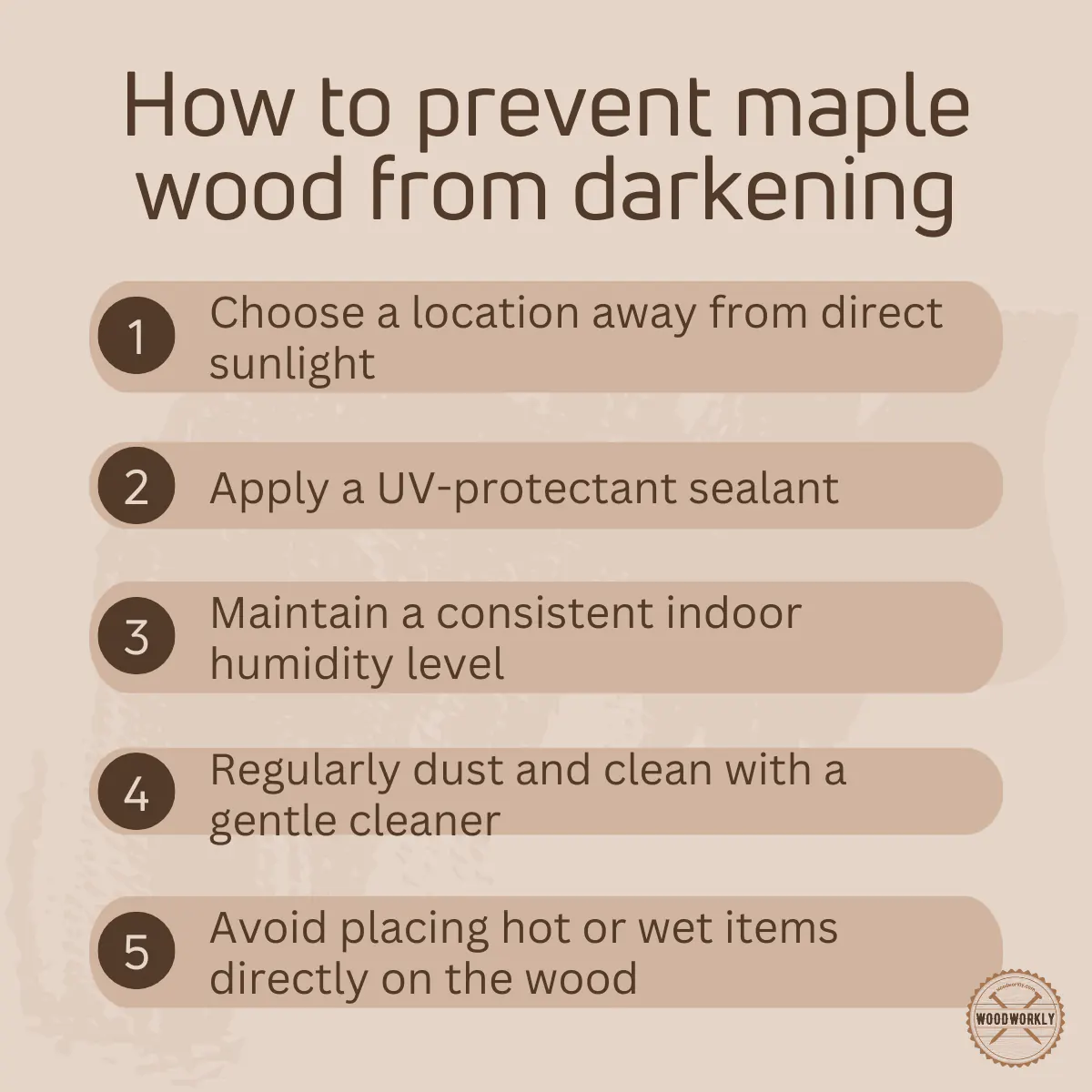
How To Keep Maple Wood From Turning Yellow
Let’s take a moment to understand why maple wood turns yellow.
This phenomenon is due to a natural aging process where the lignin in wood reacts with light, especially ultraviolet (UV) light, resulting in a yellowing effect.
While it can add a touch of antiquity and charm to some pieces, you might prefer to maintain the original color of the wood in certain cases.
Choose the Right Finish: A Key Decision
The finish you choose for your maple wood can have a significant effect on how much it yellows over time.
Some finishes, especially oil-based ones, tend to yellow more than others.
For instance, polyurethane, a popular choice for many, tends to add a warm, amber tone to the wood which can turn more yellow as it ages.
On the other hand, water-based finishes, such as acrylic or lacquer, maintain the natural color of the wood more effectively.
These finishes are clear and do not add any additional color to the wood, making them an excellent choice for preserving the original appearance of your maple wood.
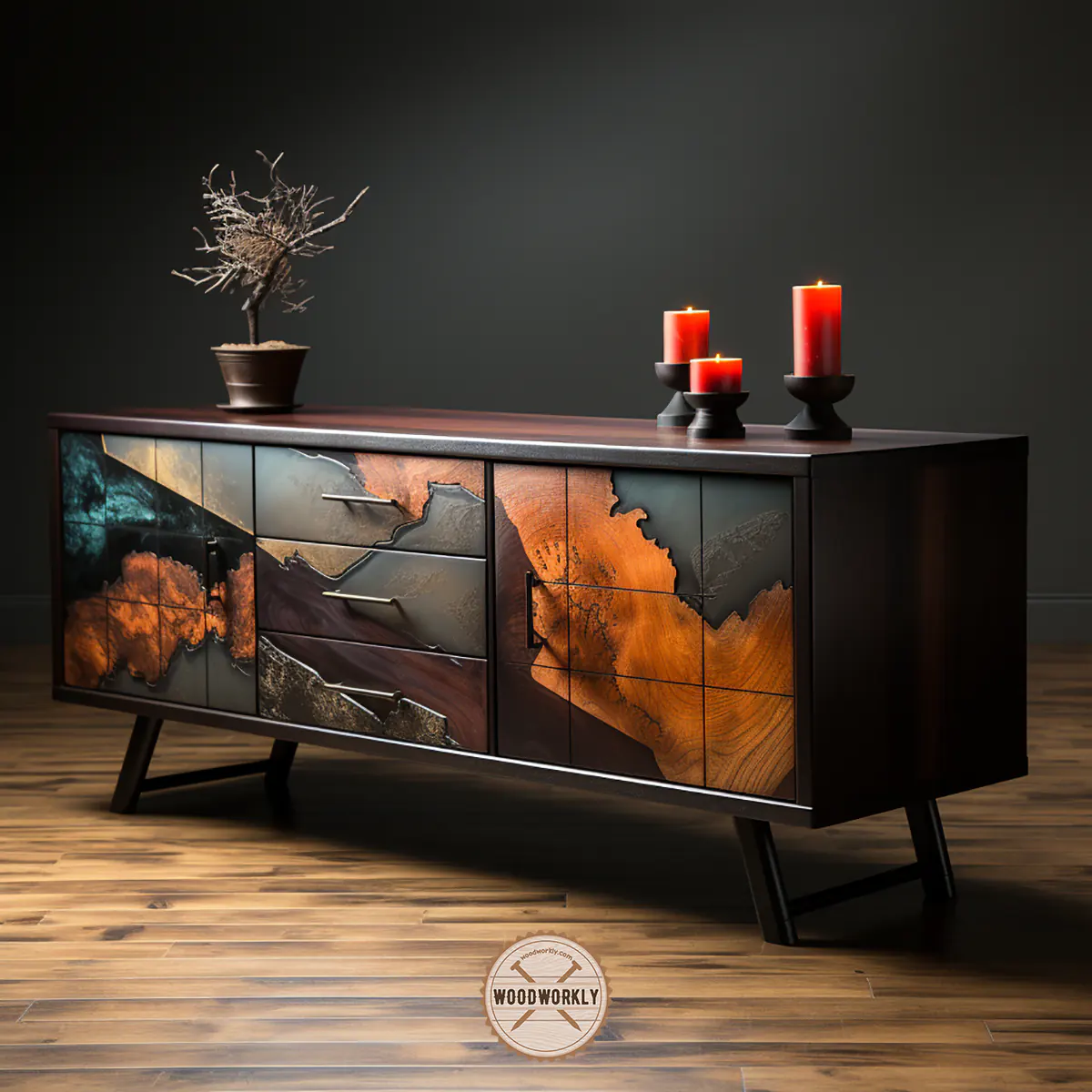
UV Protection: Your Maple Wood’s Sunscreen
As the sun’s ultraviolet rays contribute significantly to the yellowing of maple wood, using a finish that includes UV blockers can help slow down this process.
These UV blockers absorb the harmful rays and protect the lignin in the wood from reacting and causing discoloration.
This type of finish is particularly beneficial if your maple wood piece is located near a window or any place exposed to direct sunlight.
Routine Maintenance: An Ongoing Commitment
Maintaining your maple wood pieces goes a long way in preserving their natural color.
This involves regular dusting to remove any dirt or debris that might scratch the finish and expose the wood underneath.
Cleaning with products designed specifically for wood care is also a good practice to follow.
Refinishing your pieces every few years can also help prevent yellowing.
This process removes the old, possibly yellowed, finish and applies a new layer, thereby resetting the clock on the yellowing process.
By choosing the right finish, protecting the wood from UV light, and committing to regular maintenance, you can slow down the yellowing process and enjoy the pristine beauty of maple wood for many years to come.
Congrats folks! Now you know, Does maple wood darken over time and how to avoid maple from darkening, and what aged maple will look like?
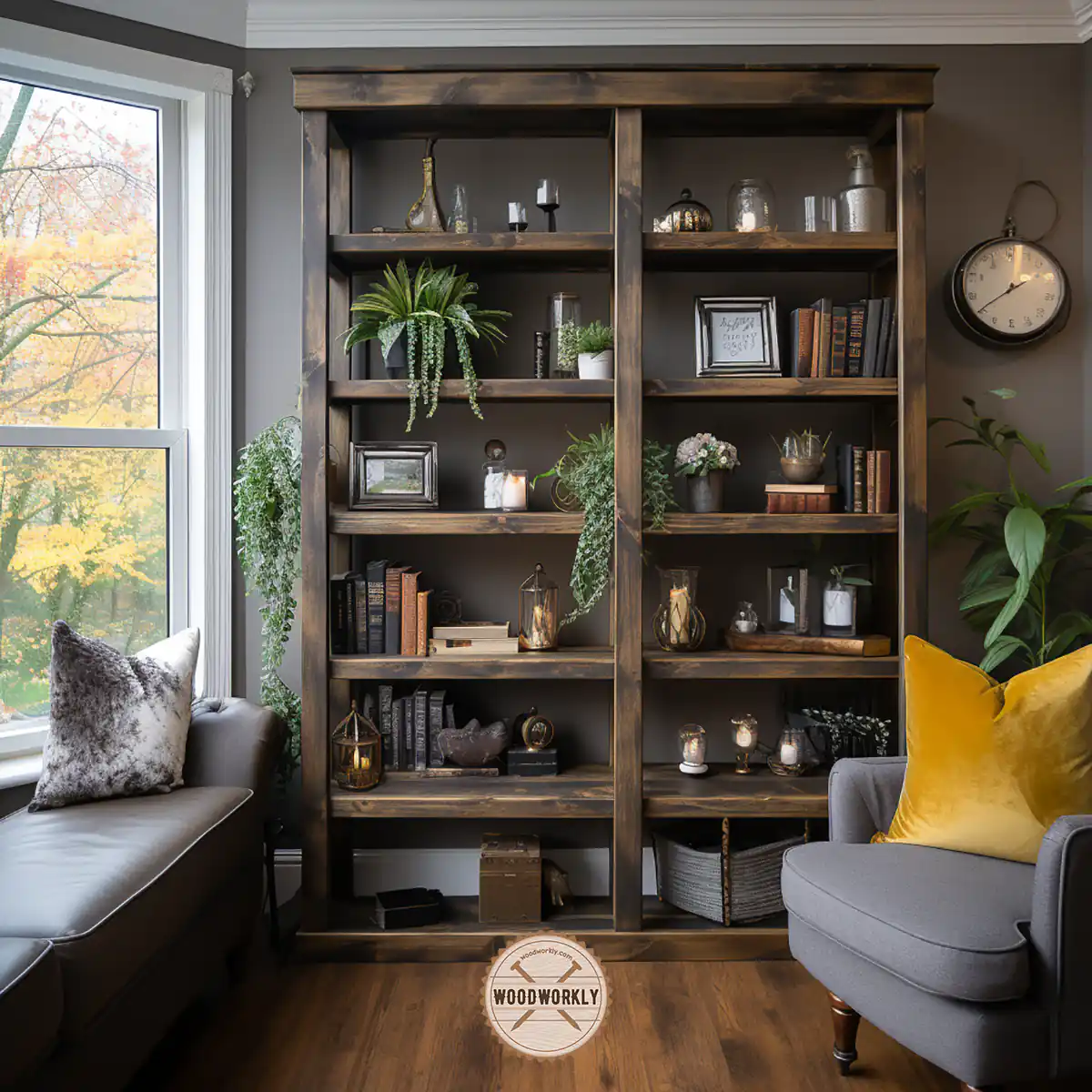
So, let’s answer some frequently asked questions.
FAQs
Does maple wood naturally darken over time?
Yes, maple wood naturally darkens over time due to the aging process, and exposure to light and oxygen. The darkening can be more pronounced if the wood is exposed to direct sunlight.
How long does it take for maple wood to darken?
The timeframe can vary greatly depending on the conditions the wood is exposed to. In general, you might start to notice some darkening within a few months to a year.
Does the darkening of maple wood affect its quality?
No, the darkening of maple wood is a natural process and doesn’t affect the structural integrity or quality of the wood. In fact, some people appreciate the aged look it can give to a piece.
Can the darkening process be slowed down or stopped?
While it’s not possible to completely stop the darkening process, you can significantly slow it down by using a UV-protective finish and by limiting the wood’s exposure to direct sunlight.
Will refinishing my maple wood furniture reverse the darkening?
Refinishing can help lighten the appearance of the wood to some extent as it involves removing the aged surface layer and applying a fresh coat of finish, but it may not completely reverse the darkening.
Does the type of finish I use impact the darkening process?
Yes, the type of finish can impact how quickly and how much the wood darkens. Water-based finishes can slow the darkening process better than oil-based finishes, which tend to add a warm tone to the wood.
What can I do to preserve the original color of my maple wood furniture?
To preserve the original color, consider using a clear, water-based finish, apply a UV-protective sealant, keep the wood out of direct sunlight, and commit to routine maintenance and cleaning.
Did I cover all you wanted to know about: Does Maple Wood Darken Over Time?
In this article, I took a look at why maple and other hardwoods do color-changing over time under direct sunlight and oxygen and how you can slow down the process.
Maple wood will darken over time. The very bright and light color of maple wood will slowly turn into dark color over the years. It turns into a deep golden honey color tone above its original bright white with reddish-brown hues with exposure to sunlight and oxygen. The same thing happened to the wooden furniture made of maple.
As a woodworker, who worked with many times of woods, my advice is to whatever wood you use for woodworking projects, furniture, carpentry, and flooring make sure to do proper finishing.
Because proper finishing can not only stop the darkening of the wood but also gives good weather resistance and increase durability as well.
But I have to say, for some woodworking applications, maple is more attractive when they age.
If you’re a person who works with nature, not against nature, you won’t much bother about the color changing of maple wood.